We're celebrating our new website -
and you get. . .
and you get. . .
A special 10% Off!
Simply enter LAUNCH10 at checkout to redeem your discount. Don’t miss out on this limited time offer!
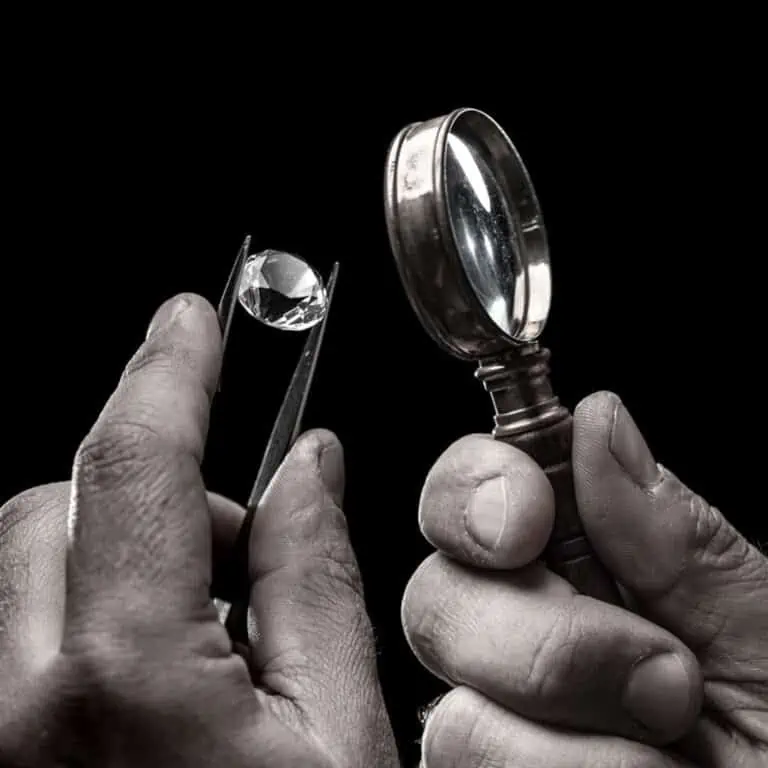
Diamonds are a girl’s best friend, or so the saying goes. These precious stones are not only a symbol of love and commitment but also an excellent investment. However, with so many diamond imitations and fakes on the market, it can be really hard to know if you’re getting the real deal.
That’s why it’s essential to learn how to identify genuine diamonds, whether shopping for an engagement ring or just treating yourself to some sparkly bling. This article will share expert tips on identifying natural diamonds, from examining the cut and color to checking for imperfections.
With these tips, you’ll know how to tell if a diamond is real and ensure that you’re investing in the real thing. So, don’t get fooled by fakes – read on to become a diamond identification pro!
The importance of identifying genuine diamonds cannot be overstated. For one, diamonds are a significant investment, and you want to ensure you get value for your money. Additionally, diamonds are often associated with important milestones like weddings. You would like to avoid ending up with a fake diamond on such occasions. Furthermore, some diamond imitations, such as those made of lead glass, can harm your health.
Identifying genuine diamonds can also be a matter of ethics. Unfortunately, the diamond industry has a history of unethical practices, such as the trade of conflict or blood diamonds. By learning to identify genuine diamonds, you can ensure you’re not supporting such practices.
One common way to identify genuine diamonds is by using a loupe, a small magnifying glass. With a loupe, you can examine the stone’s facets, or flat surfaces, to see if they’re symmetrical and evenly spaced. Genuine diamonds have well-defined, sharp, and smooth characteristics. In contrast, fake diamonds may have rounded or chipped edges.
Another standard method is the water test. Fill a glass with water and then drop the diamond to perform this test. Genuine diamonds will sink to the bottom, while fake diamonds float or sink slowly. However, this test could be better, as some fakes can be made to sink by adding weight.
You can also use the scratch test, which should be done cautiously. Diamonds are among the hardest natural substances on the planet and can scratch most other materials. Try rubbing a piece of glass with the diamond. If the diamond marks the mirror, it’s likely a genuine diamond. However, this test can damage the diamond or the glass, so use it only as a last resort.
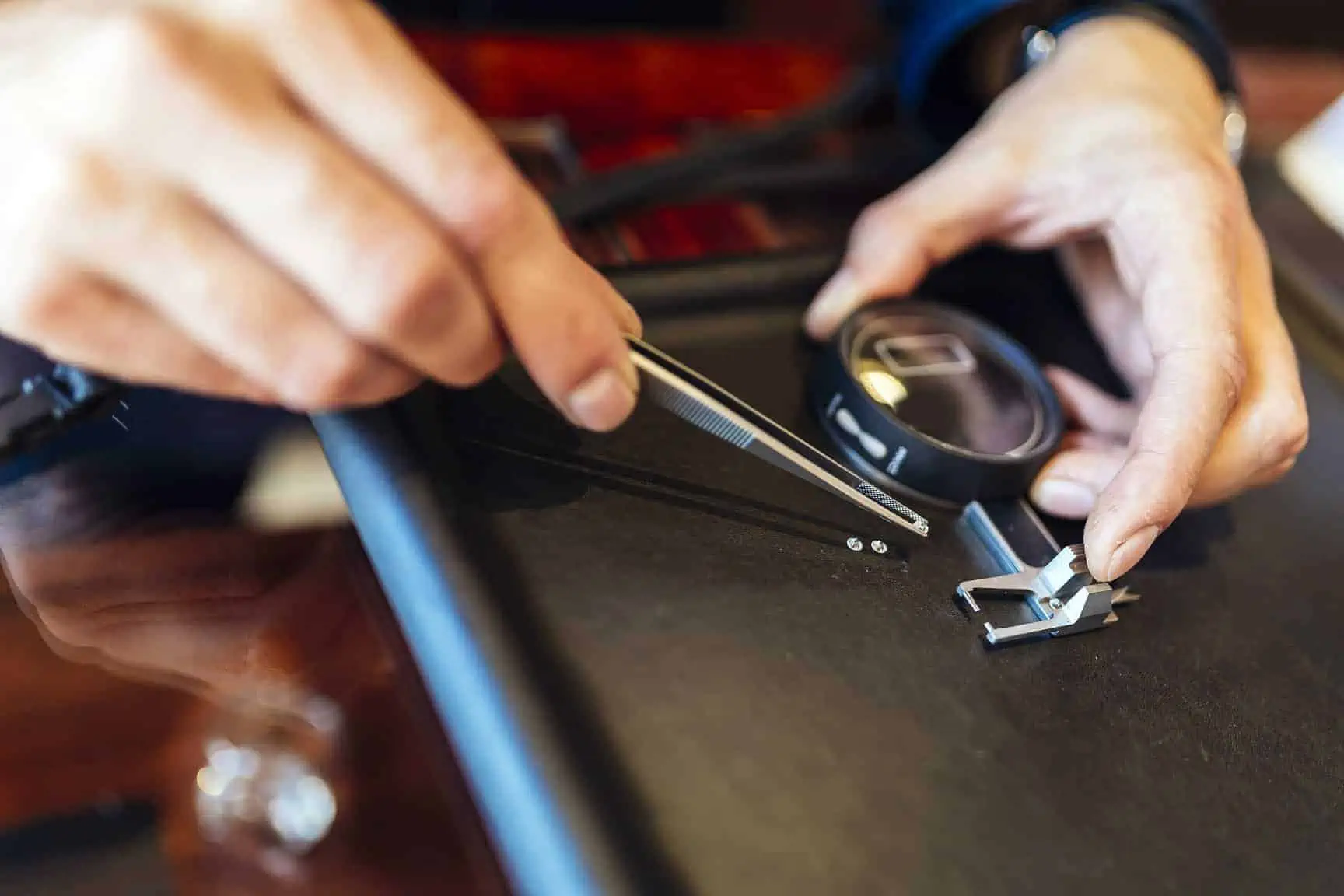
Understanding the key differences between real diamonds and lab-grown diamonds is crucial when determining a diamond’s authenticity. Real diamonds hold a special rarity since they’re formed deep within the Earth over millions of years. On the other hand, lab-grown diamonds are created through advanced technology that replicates the natural diamond-growing process. This results in diamonds that are physically and chemically identical to their natural counterparts. Meaning we refer to them as one when checking for authenticity.
To ascertain a diamond’s authenticity, certification and proper grading from reputable gemological laboratories are essential. As we mention here, common testing methods (diamond testers, testing its sparkle and fire, examining for inclusions or blemishes) are a great way to have some sense of its realness.
The 4 C’s of diamond grading, namely cut, color, clarity, and carat weight, are essential when identifying genuine diamonds.
Cut refers to the diamond’s symmetry, and polish and how well it reflects light. A well-cut diamond will sparkle as well as reflect light to maximize its brilliance and fire. In contrast, a poorly cut diamond will look dull and lifeless, even with good color and clarity.
Color refers to the diamond’s lack of color. The most valuable diamonds are colorless, while the ones with a yellow or brown tint are less valuable. However, some diamonds, such as fancy-colored diamonds, have intense and rare colors that can increase their value.
Clarity refers to the diamond’s internal and external flaws, inclusions, and blemishes. A flawless diamond is rare and valuable and has no inclusions and/or blemishes visible to the naked eye. However, most diamonds have inclusions or imperfections, affecting their value depending on size, location, and number.
Carat weight refers to the diamond’s weight and size. Larger diamonds are rarer and thus more valuable than smaller ones, when all other factors are equal.
There is also a fifth C’ of diamonds. To know all about it, check out our 5 C’s of Diamond Characteristics article.
While the above mentioned methods help identify most diamond imitations, some advanced techniques can help you spot more sophisticated fakes. For example, some fakes can have a diamond-like shine or luster due to coatings or treatments. However, they may reveal telltale signs, such as uneven coloring or patterns under close inspection.
Another advanced method is spectroscopy, which analyzes the light emitted or absorbed by the diamond. This can reveal the diamond’s chemical composition and detect treatments or enhancements. However, this method requires specialized equipment and expertise and may only be available to some of the average consumers.
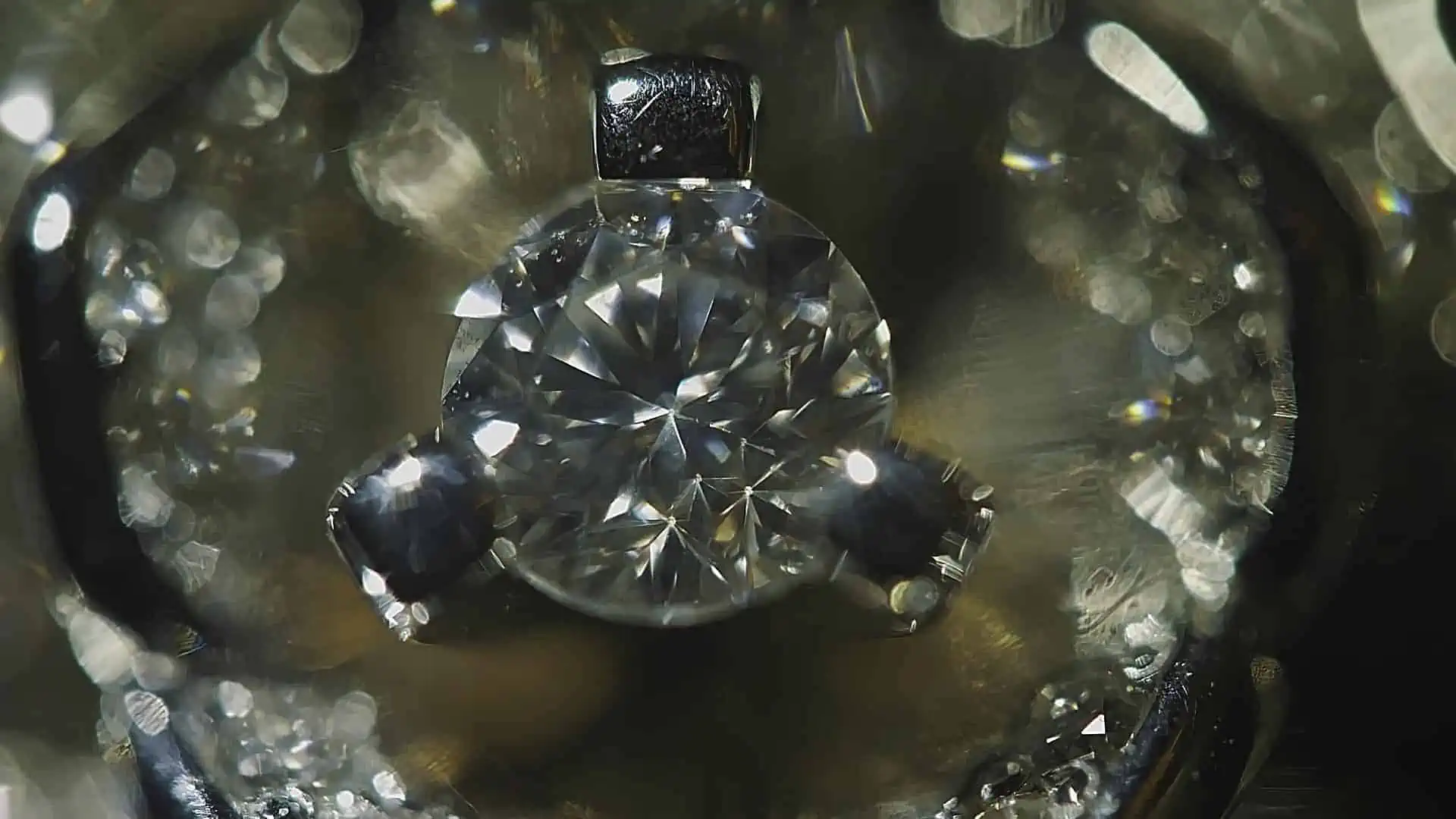
Some diamond sellers may try to pass off fake diamonds using fake certificates. Therefore, it’s essential to know how to spot phony diamond certificates. Check if the certification comes from a reputable and recognized gemological laboratory, such as the International Gemological Institute. Also check the certificate’s details, such as the diamond’s 4 C’s and the certificate’s date and number to see if they match the diamond’s properties.
Buying fake diamonds can have several risks and consequences. For one, you’ll be paying for a simulated diamond, which is a waste of money. Also, fake diamonds may have different durability and longevity than genuine diamonds, affecting their value and lifespan. Furthermore, some diamond imitations can harm your health, like those made of lead glass, which can contain lead and other toxic substances.
Buying fake diamonds can also have ethical implications. By purchasing fake diamonds, you’re not only supporting the trade of fake goods but also potentially supporting the trade of conflict or blood diamonds. As mentioned, identifying genuine diamonds can help you avoid such practices and make more ethical choices.
When buying genuine diamonds, do your research to ensure that you’re investing in the real thing. One tip is to buy from a reputable and established diamond dealer. Look for dealers who are members of recognized industry associations, such as the Diamond Dealers Club or the Jewelers of America. You can also check the online reviews to see what other customers say about the dealer’s products and services.
Ask for a diamond grading report from a reputable gemological laboratory, like the GIA or the IGI. This will give you an independent and unbiased assessment of the diamond’s characteristics. This can include the 4 C’s, fluorescence, symmetry, polish, among others .
Finally, it’s vital to trust your guts and not rush into a purchase. Instead, take your time to examine the diamond and ask questions about its properties and origin. A genuine diamond dealer will happily provide you with all the information you need and help you make an informed decision.
At Ariel Jewelry, we don’t mess around with our diamonds. We have over 20 years of experience on the fields of jewelry, diamonds and engagement rings. When it comes to the diamond – it’s our crown jewel. All of our diamonds come with a IGI certificate indicating all of it’s specifications. Even more, you can check out all our diamonds characteristics in advance.
On our product page, you have both Ring & Diamond specifications:
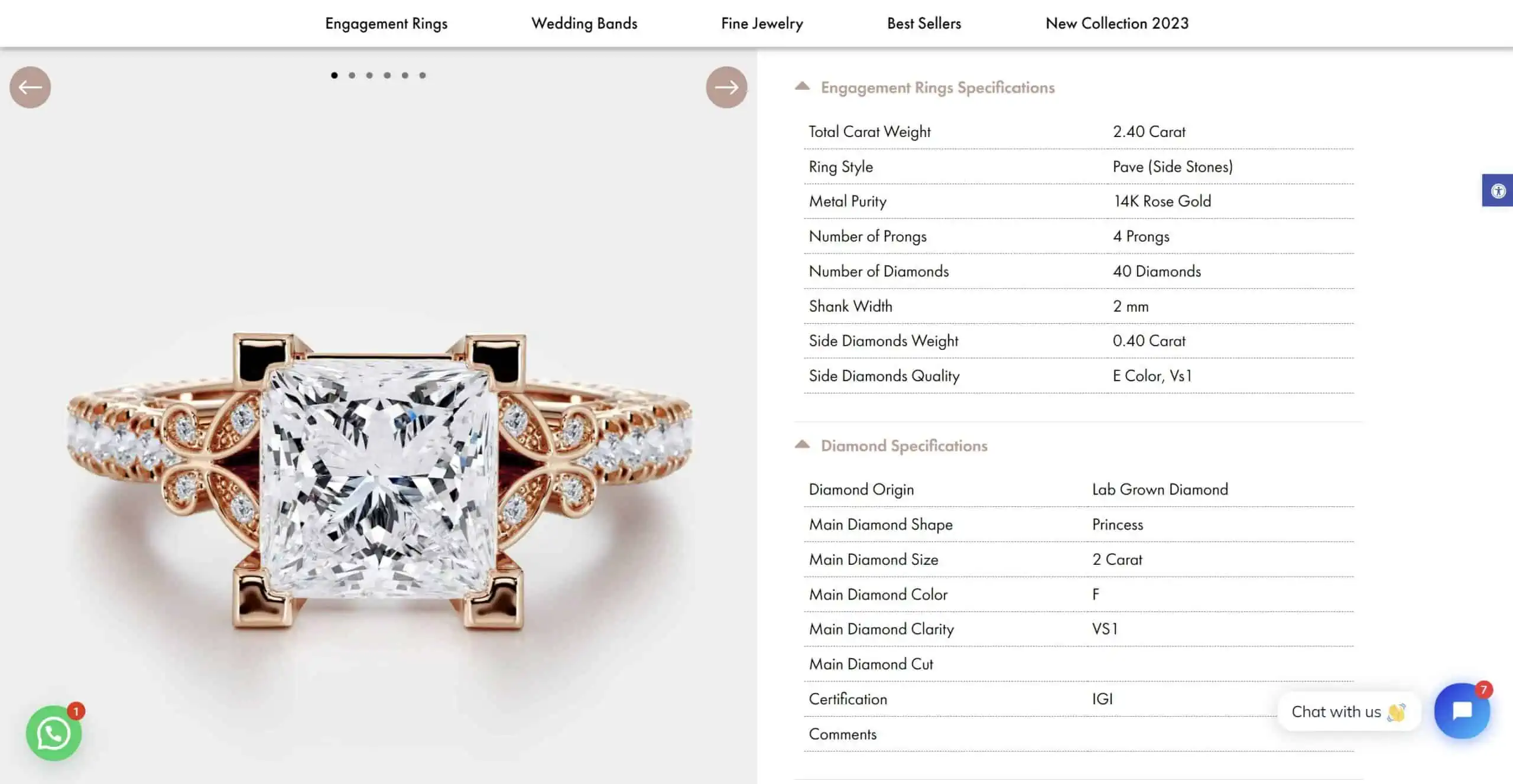
On our products gallery, on the same page, you can see IGI’s diamond certificate. After purchasing a ring – you’ll get the certificate along with your new diamond. A certificate example:
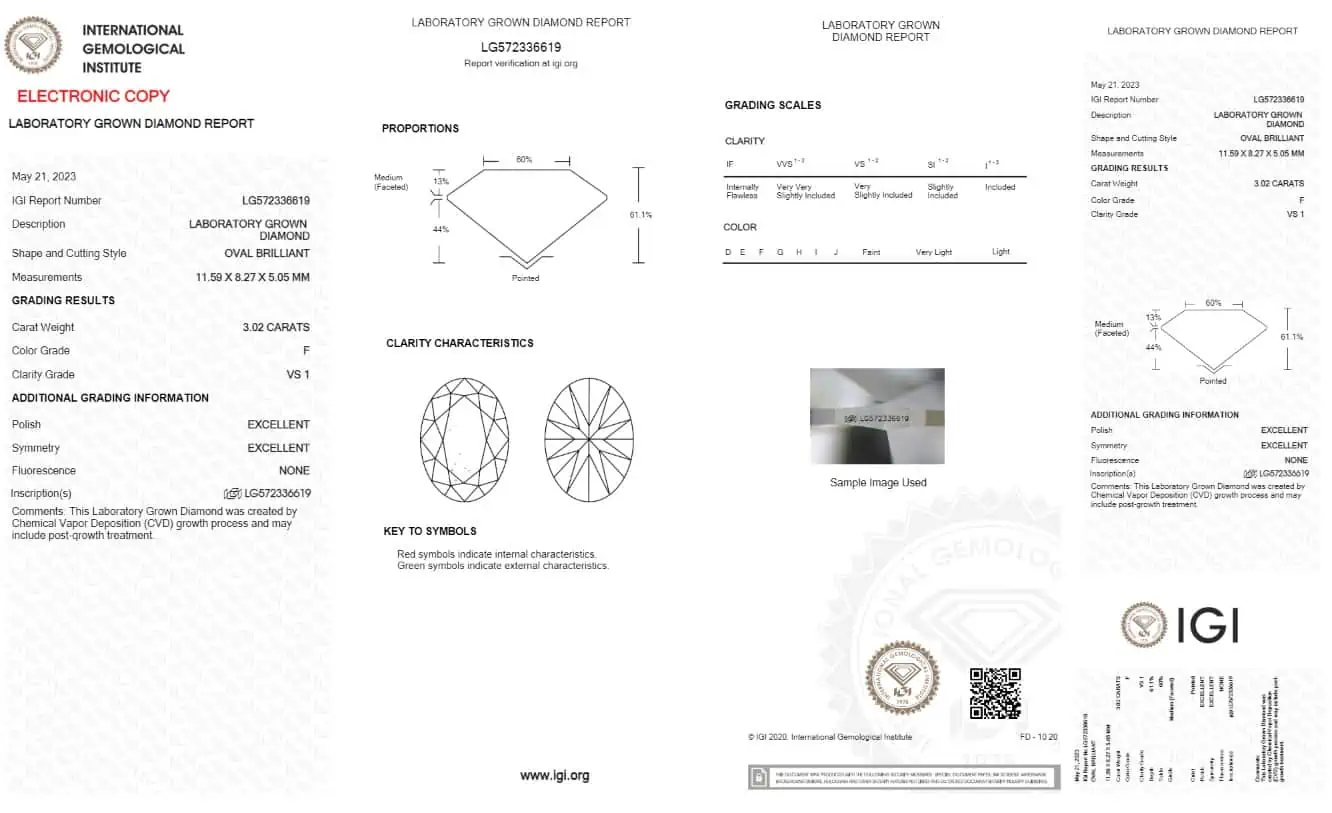
Check out our high value engagement rings now!
Our newsletter is the perfect mixture between professional good-to-knows and occasional deal & coupons.
Want just one or the other? Join us. You’ll get exactly what you want.
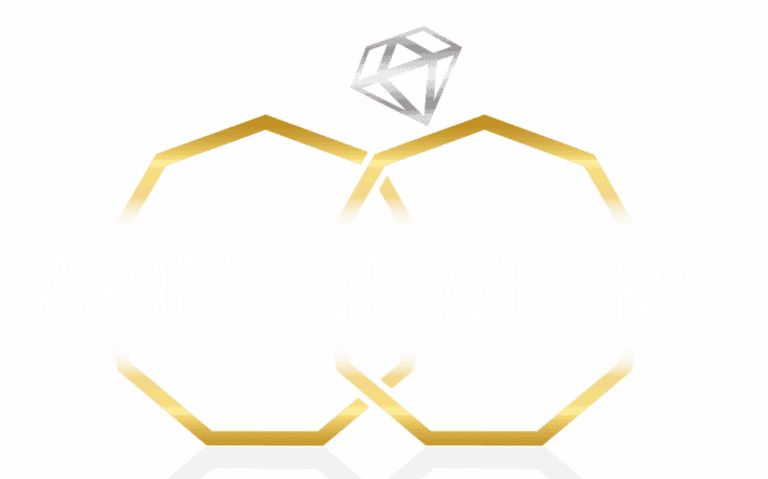
Boutique, family owned, handcrafted Jewelry Design team.
Between quality materials, impeccable design and personal customer service —
We choose all.
We are here for you call US:
+1 (917)-477-8663

If you would like to measure your ring size immediately the quickest ways and with an accurate fit – you can do it with our Ring Size Chart here.
The way to quickly get your measurements is either going to the nearest jewelry shop and ask them to measure you, or to buy a Ring Sizer Measuring Gauge with a 2-day delivery to the US!
Then you can match your measurement to the size chart below to get your exact ring size.
A few factors we recommend to consider for the perfect measure:
Still not sure what your size is or what to choose for your love one? We’re here to help!
| MM | Inches | MM | Inches | UK/AU | US & Canada & Mexico | France | Germany & Russia & Ukraine & Asia | India & China & Japan & South America | Italy & Spain & Netherlands & Switzerland |
| 14.05 | 0.553 | 44.14 | 1.74 | F | 3 | 44 | 14 | 4 | 4 |
| 14.25 | 0.561 | 44.77 | 1.76 | F 1/2 | 3.25 | 44.625 | 14.25 | 4.5 | 4.625 |
| 14.45 | 0.569 | 45.4 | 1.79 | G | 3.5 | 45.25 | 14.5 | 5 | 5.25 |
| 14.65 | 0.577 | 46.02 | 1.81 | H | 3.75 | 45.875 | 14.75 | 6 | 5.875 |
| 14.86 | 0.585 | 46.68 | 1.84 | H 1/2 | 4 | 46.5 | 15 | 7 | 6.5 |
| 15.04 | 0.592 | 47.25 | 1.86 | I | 4.25 | 47.125 | 15.25 | 7.5 | 7.125 |
| 15.27 | 0.601 | 47.97 | 1.89 | I 1/2 | 4.5 | 47.75 | 15.5 | 8 | 7.75 |
| 15.53 | 0.611 | 48.79 | 1.92 | J 1/4 | 4.75 | 48.375 | — | 8.5 | 8.375 |
| 15.7 | 0.618 | 49.32 | 1.94 | J 1/2 | 5 | 49 | 15.75 | 9 | 9 |
| 15.9 | 0.626 | 49.95 | 1.97 | K 1/4 | 5.25 | 49.625 | 16 | 9.5 | 9.625 |
| 16.1 | 0.634 | 50.58 | 1.99 | L | 5.5 | 50.25 | 16.25 | 10 | 10.25 |
| 16.3 | 0.642 | 51.21 | 2.02 | L 1/4 | 5.75 | 50.875 | — | 11 | 10.875 |
| 16.51 | 0.65 | 51.87 | 2.04 | M | 6 | 51.5 | 16.5 | 12 | 11.5 |
| 16.71 | 0.658 | 52.5 | 2.07 | M 1/2 | 6.25 | 52.125 | 16.75 | 12.5 | 12.125 |
| 16.92 | 0.666 | 53.16 | 2.09 | N | 6.5 | 52.75 | 17 | 13 | 12.75 |
| 17.13 | 0.674 | 53.82 | 2.12 | N 1/2 | 6.75 | 53.375 | — | 13.5 | 13.375 |
| 17.35 | 0.683 | 54.51 | 2.15 | O | 7 | 54 | 17.25 | 14 | 14 |
| 17.45 | 0.687 | 54.82 | 2.16 | O 1/2 | 7.25 | 54.625 | 17.5 | 14.5 | 14.625 |
| 17.75 | 0.699 | 55.76 | 2.2 | P | 7.5 | 55.25 | 17.75 | 15 | 15.25 |
| 17.97 | 0.707 | 56.45 | 2.22 | P 1/2 | 7.75 | 55.875 | — | 15.5 | 15.875 |
| 18.19 | 0.716 | 57.15 | 2.25 | Q | 8 | 56.5 | 18 | 16 | 16.5 |
| 18.35 | 0.722 | 57.65 | 2.27 | Q 1/2 | 8.25 | 57.125 | 18.25 | 16.5 | 17.25 |
| 18.53 | 0.729 | 58.21 | 2.29 | Q 3/4 | 8.5 | 57.75 | 18.5 | 17 | 17.75 |
| 18.69 | 0.736 | 58.72 | 2.31 | R 1/4 | 8.75 | 58.375 | 18.75 | 17.5 | 18.375 |
| 18.89 | 0.748 | 59.34 | 2.35 | R 3/4 | 9 | 59 | 19 | 18 | 19 |
| 19.22 | 0.757 | 60.38 | 2.38 | S 1/4 | 9.25 | 59.625 | 19.25 | 18.5 | 19.625 |
| 19.41 | 0.764 | 60.98 | 2.4 | S 3/4 | 9.5 | 60.25 | 19.5 | 19 | 20.25 |
| 19.62 | 0.772 | 61.64 | 2.43 | T 1/4 | 9.75 | 60.875 | 19.75 | 19.5 | 20.875 |
| 19.84 | 0.781 | 62.33 | 2.45 | T 1/2 | 10 | 61.5 | 20 | 20 | 21.25 |
| 20.02 | 0.788 | 62.89 | 2.48 | U | 10.25 | 62.125 | 20.25 | 21 | 22.125 |
| 20.2 | 0.797 | 63.46 | 2.5 | U 1/2 | 10.5 | 62.75 | 20.5 | 22 | 22.75 |
| 20.44 | 0.805 | 64.21 | 2.53 | V 1/4 | 10.75 | 63.375 | — | 22.5 | 23.375 |
| 20.68 | 0.814 | 64.97 | 2.56 | V 1/2 | 11 | 64 | 20.75 | 23 | 24 |
| 20.85 | 0.821 | 65.5 | 2.58 | W 1/4 | 11.25 | 64.625 | — | 23.5 | 24.625 |
| 21.08 | 0.83 | 66.22 | 2.61 | W 3/4 | 11.5 | 65.25 | 21 | 24 | 25.25 |
| 21.24 | 0.836 | 66.73 | 2.63 | X 1/4 | 11.75 | 65.875 | — | 24.5 | 25.875 |
| 21.49 | 0.846 | 67.51 | 2.66 | Y | 12 | 66.5 | 21.25 | 25 | 26.5 |
| 21.69 | 0.854 | 68.14 | 2.68 | Y 1/2 | 12.25 | 67.125 | 21.5 | 25.5 | 27.125 |
| 21.89 | 0.862 | 68.77 | 2.71 | Z | 12.5 | 67.75 | 21.75 | 26 | 27.75 |
| 22.1 | 0.87 | 69.43 | 2.73 | Z +1/2 | 12.75 | 68.375 | — | 26.5 | 28.375 |
| 22.2 | 0.75 | 70 | 2.74 | Z+1 | 13 | 69 | 22 | 27 | 29 |
Simply enter LAUNCH10 at checkout to redeem your discount. Don’t miss out on this limited time offer!